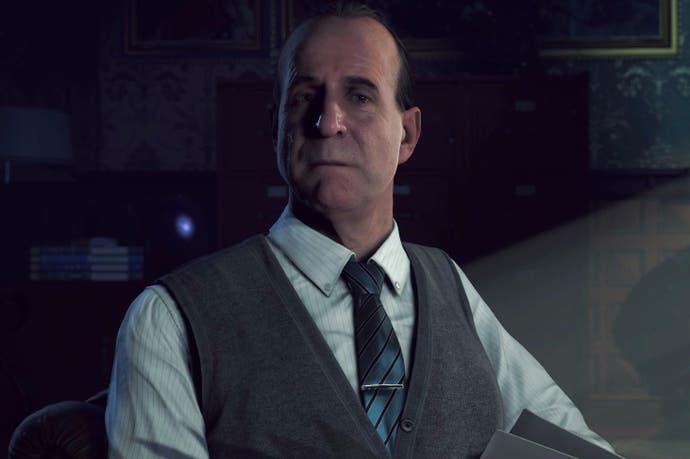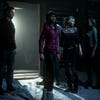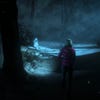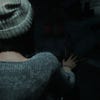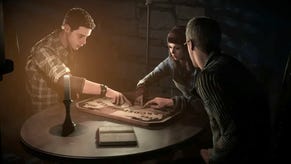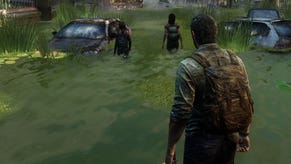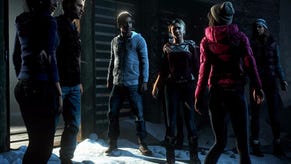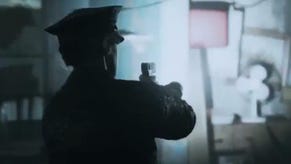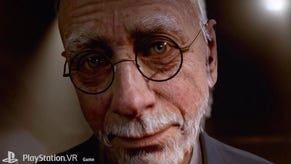Digital Foundry vs Until Dawn
A PS4 sleeper hit, and a shock technical marvel.
Originally conceived as a last-gen game, Until Dawn's revival on PlayStation 4 brings it to the very cutting edge of today's rendering and motion capture technologies. The Killzone Shadow Fall engine is at the heart of its delivery, and UK developer Supermassive Games doesn't hold back on using its strong feature-set to produce an atmospheric, beautifully-lit horror tale of many tangents. With some eye-catching facial capture tech in play too, the only caveat is Until Dawn's high visual standard is paid for - it's fair to say - in performance.
The move to the latest Killzone engine works out well for Until Dawn. Image quality is sharp at a native 1920x1080, backed by a custom post-process anti-aliasing technique, leaving little trace of jagged edges. Many of the rendering methods found in Guerrilla Games' first PS4 effort are also found here. For one, we have its superb physically-based lighting, allowing materials across the woodlands and cabin to react according to real-world values. From the woolly jumpers of the eight imperiled teenagers, to the snowy paths of the Blackwood Pines, each surface reflects light based on roughness, opacity and reflectance.
The results look superb, particularly as light plays across each character's face in heavily shaded areas, bringing out the accuracy of their skin shading. Supermassive Games' art direction for the environment is also crucial - and included in Guerilla's engine are a number of lighting tricks to help this along. Among them is volumetric lighting, giving us the long, streaming shafts that pass across woodland fog and falling snow. With strong bounce lighting, plus the engine's distinctive lens flares effect, the moments we step out of the shadows call to mind Shadow Fall's prowess in this area.
Cut-scenes are bolstered by a per-object motion blur too, plus the engine's expensive depth of field implementation too. A fixed, third-person camera means the use of either can be directed by the studio more strictly - and in many cases Until Dawn goes light on the use of each effect. Players are given a slight degree of flexibility in controlling the camera - but for the most part, Supermassive decides how each area is framed.
Procedural animation is also feature that carries over from Guerilla Games' engine, which in our breakdown of Killzone Shadow Fall showed skeletal simulation, with physics-based elements layered over the top. In this case, Until Dawn allows characters to walk in one direction, while their head and torch are directed in another via the right analogue stick. On top of that we have cloth simulation that works independently of the logical skeleton underneath, adding position-based dynamics like hair or dangling straps on clothes.
But the real star of the show is Until Dawn's integration of motion capture. This covers both face and body capture, stemming from two separate studios; Cubic Motion, handling the bulk of the facial capture animation work, while 3Lateral takes point on capturing and rigging character models. The credentials here are strong, each having supplied the excellent facial and body capture in Crytek's Ryse on Xbox One - and the results in Until Dawn easily match this.
Based on the game's bonus documentaries, the process seems quite involved. Motion capture takes place over several sessions at Pinewood and Shepperton Studios in London. Facial capture is handled separately to the body movements, though actors are allowed to walk freely during the former for later reference (unlike the stricter process seen in LA Noire's MotionScan sessions, where actor's heads are locked in place). Each session is then composited together in an arduous final edit, but the results speak for themselves.
Furrowed brows, acne scars, licking tongues, and glistening teeth are convincingly implemented - all dynamics that can be tweaked on the fly using the studio's tools, post-capture. This is boastfully demoed in the Dr Hill sequences between each chapter, a surreal set of scenes that shows subsurface scattering deployed across his skin. With lighting traveling past the blinds to the right, the performance is exaggerated to really show off the actor's range - but the accuracy of the capture is startling, with skin shading quality at a level we'd expect of big budget films. It all runs in real-time on PS4 too, as our psych-test questions are answered dynamically.
It's fair to say this effort pays off in Until Dawn. Character development is everything as the adventure unfolds around the Blackwood Pines cabin. An emotional investment - either good or bad - in these eight teenagers is the crux of the game's appeal, and having each actor rendered in-engine to this level of detail only amplifies its draw. And though the regular cast isn't quite as impressively detailed as the eccentric Dr Hill, notably during close-up shots, the effect is still impressive.
This ambition comes with certain drawbacks though. Stuttering is an issue, and on close testing, the game's performance rests within the 20-40fps range - and typically more towards the lower end. This is with v-sync engaged at all times, but it's clear the push for top-grade facial capture and lighting really cripples the frame-rate at points, with some of its lowest drops to 20fps occurring during close-ups.
The lack of a 30fps cap doesn't help either, and frame-rates go up to 40fps at rare points. This means the frame-time switches to 16.67ms, but without consistency at any one number, it simply means fast camera motion shows judder as the refresh switches between rates. In theory a cap at 30fps would help, but in its current state long segments of Until Dawn unfold at 20fps - particularly in cut-scenes with all characters on-screen.
Until Dawn - the Digital Foundry verdict
Until Dawn is a bizarre concoction, but one that leaves a good lasting impression. It's a sleeper hit with serious tech credentials to start, blending Heavy Rain's branching narrative design with Guerilla Games' latest engine - producing a superb physically-lit woodland and cabin setting. As a PS4 title it's a satisfying visual package, and its legacy on last-gen hardware is rarely on show - that is, outside of some unusual performance levels, suggesting the transition to current-gen hasn't been easy. The game's main disappointment is in its frame-rate, often ticking over at the lower end of the 20-40fps range.
Indeed, Until Dawn's performance shows its visuals don't come for free, though it's not intrusive enough to harm its playability. Much of the experience is spent exploring the Blackwood Pines from fixed camera angles, and it's only on extreme close-ups on characters, particularly in cut-scenes, that stutter is apparent. On balance, putting visuals above frame-rate makes sense for a horror title in this style, and though a rock-solid 30fps is on our wishlist, at least its ambition in character-building and set detail isn't compromised.
But above all, Supermassive Games' push for capture technology is a real crowd-pleaser. With Cubic Motion and 3Lateral at the helm, the results are among the most visually striking we've seen to date. It's fair to say that we see flickers of the uncanny as the game aims for such a high level of realism - but it's nevertheless exciting to see something so technically involved running on PS4 in real-time.
Though perhaps not endowed with the outright bombastic appeal of some of Sony's other first party releases, Until Dawn is a special case. It's a gem with rough edges, but more than that, it's a showcase for the great things to come in narrative-driven games this generation.
